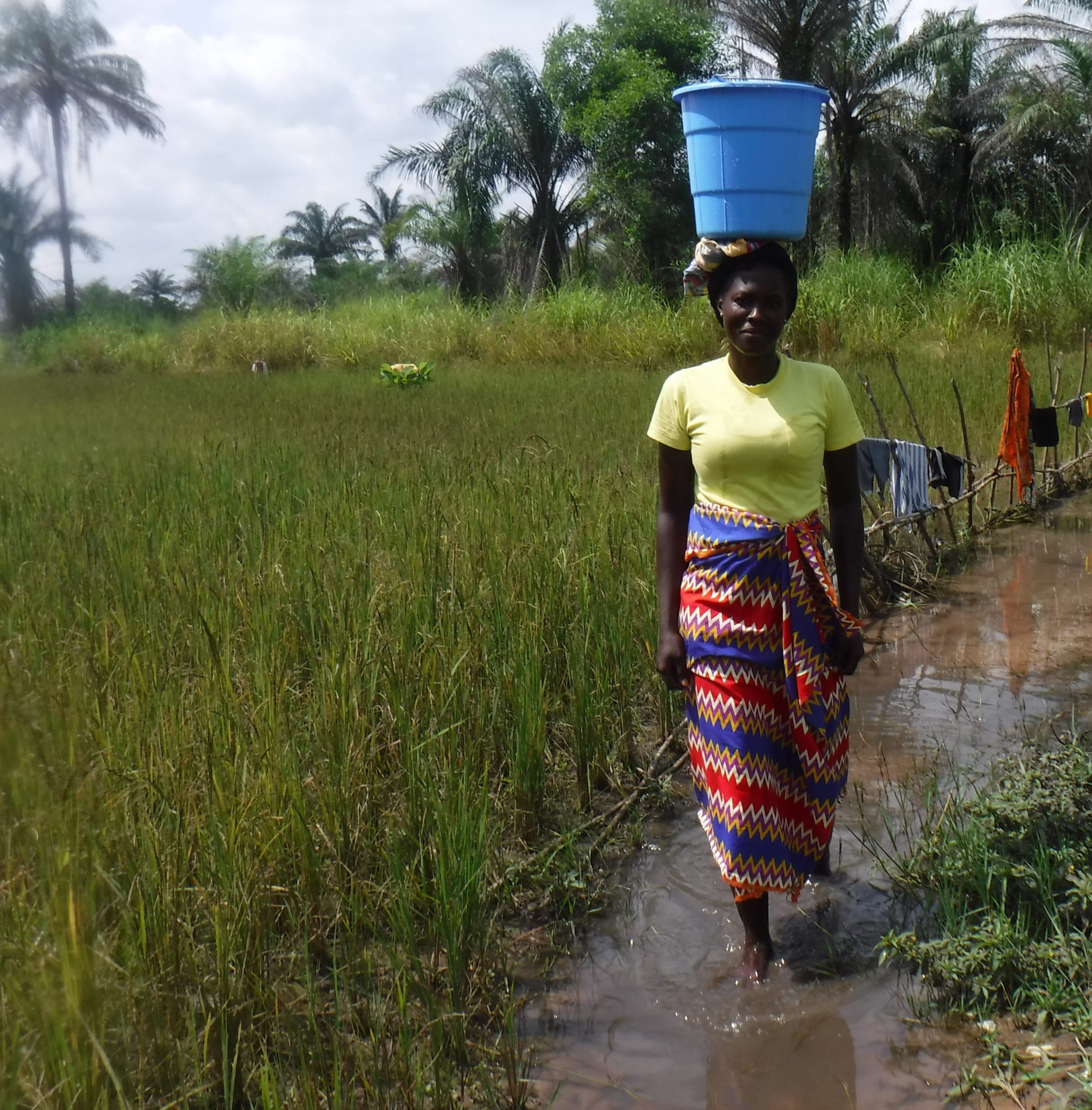The 112 people of Bundalai struggle to access sufficient water. Community members spend a large portion of each day trying to find and collect enough water to meet their basic needs, so much so that they cannot make noticeable progress in other areas of their lives.
The community members in Bundulai have no protected water source to rely on when they need it. Their options are to collect water from the local swamp or use the well at the Maternal Child Health Post, but both are far away, leaving people with little time to do other things.
"This part of the community is not near any protected water well. The community people trek [a] long distance to fetch drinking water from the protected dug well with [a] hand pump at the Maternal Child Health Post (MCHP). They can't fetch water from that source during the dry season when the well gets dry," said field officer Philip James Allieu.
The well at the MCHP not only goes dry at certain times of the year, but it is also overcrowded and understandably restricted throughout the year because its primary purpose is to serve the patients and staff of the center.

Therefore, community members rely on the swamp to meet their daily water needs, but it presents several issues. It is seasonal, so collecting water becomes more difficult during the dry season. It is overcrowded and serves multiple functions such as bathing, laundry, drinking, etc. The water is murky, and its quality is questionable at best, leaving people vulnerable to water-related illnesses.
"I am a student, and I am a resident of Bundulai Community. I fetch water from the stream for domestic work before going to school. I have to walk long distances to fetch water from the stream or the water well at the MCHP. There [is] overcrowding at the stream or the water well, which usually keeps me waiting to fetch water for a long time. I normally go to school late because of the water crisis. I usually receive punishment from my schoolteachers for going to school late," said 14-year-old Kadiatu J. (shown below).

"The stream water gets low during the dry season. Also, the stream water is not clean. I would fetch the water and place it down for the particles to settle underneath before I could drain the water from the dirt particles," concluded Kadiatu.
"I have so many constraints on accessing water. I am a petty trader. The only water source that I frequently fetch water from is the stream. The distance from my house to the stream is far and not safe for me. It is hard for me to fetch enough water to do all the domestic activities completely during the dry season. It is also not easy for me to fetch drinking water during that time, especially when the water well at the MCHP gets dry," said 27-year-old Isatu Kamara, shown below carrying water from the swamp.

"I also work on my farming every day. The crops that I cultivate do not yield enough harvest. I do not have enough time to do the farm work because I must have spent more time fetching water to do other activities at home before going to the farm to work," concluded Isatu.
Installing a new well in this section of Bundalai will enable people like Isatu and students like Kadiatu to focus on quickly and efficiently collecting safe water so they have the time and health to improve other areas of their lives.
The Proposed Solution, Determined Together...
At The Water Project, everyone has a part in conversations and solutions. We operate in transparency, believing it benefits everyone. We expect reliability from one another as well as our water solutions. Everyone involved makes this possible through hard work and dedication.
In a joint discovery process, community members determine their most advantageous water solution alongside our technical experts. Read more specifics about this solution on the What We're Building tab of this project page. Then, community members lend their support by collecting needed construction materials (sometimes for months ahead of time!), providing labor alongside our artisans, sheltering and feeding the builders, and supplying additional resources.
Water Access for Everyone
This water project is one piece in a large puzzle. In Kenya, Sierra Leone, and Uganda, we're working toward complete coverage of reliable, maintained water sources that guarantee public access now and in the future within a 30-minute round trip for each community, household, school, and health center. One day, we hope to report that this has been achieved!
Training on Health, Hygiene & More
With the community's input, we've identified topics where training will increase positive health outcomes at personal, household, and community levels. We'll coordinate with them to find the best training date. Some examples of what we train communities on are:
- Improved hygiene, health, and sanitation habits
- Safe water handling, storage & treatment
- Disease prevention and proper handwashing
- Income-generation
- Community leadership, governance, & election of a water committee
- Operation and maintenance of the water point

 Borehole Well and Hand Pump
Borehole Well and Hand Pump
 Rehabilitation Project
Rehabilitation Project














